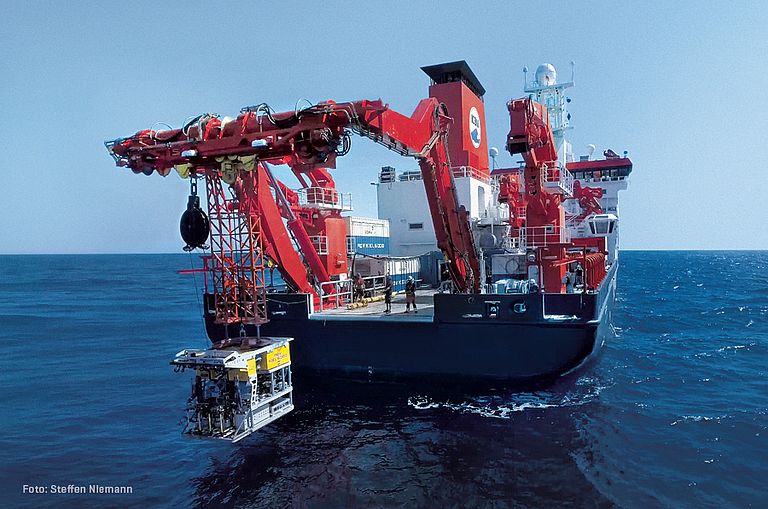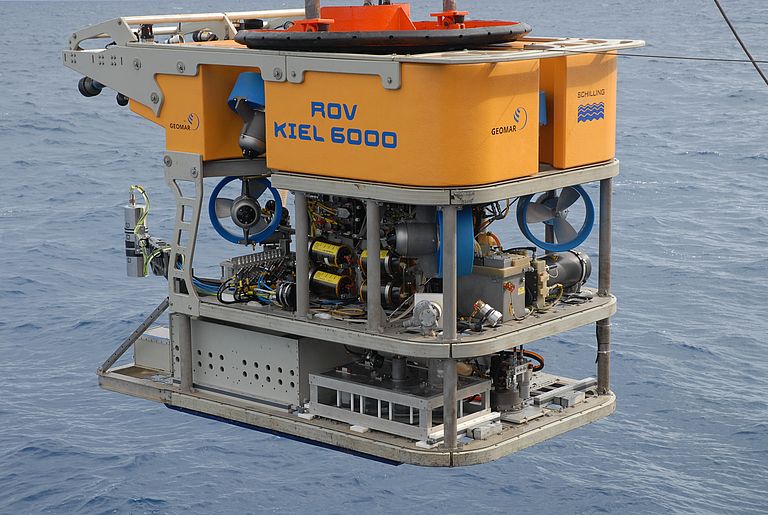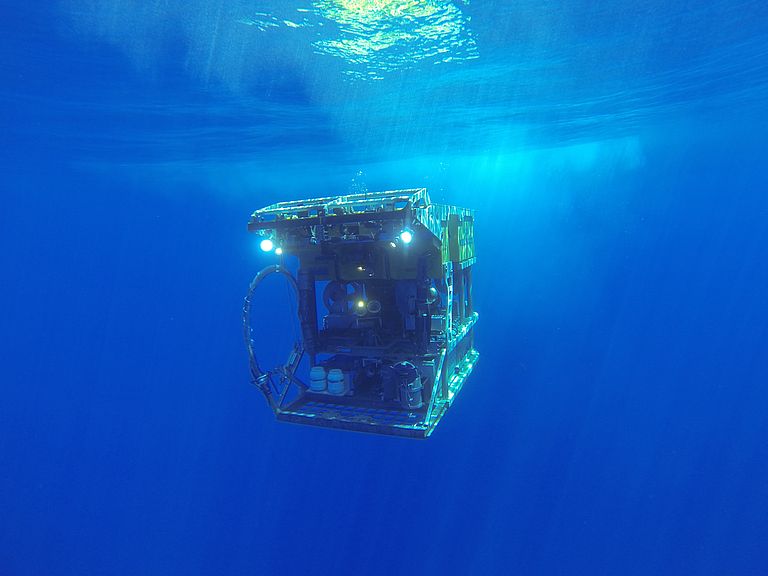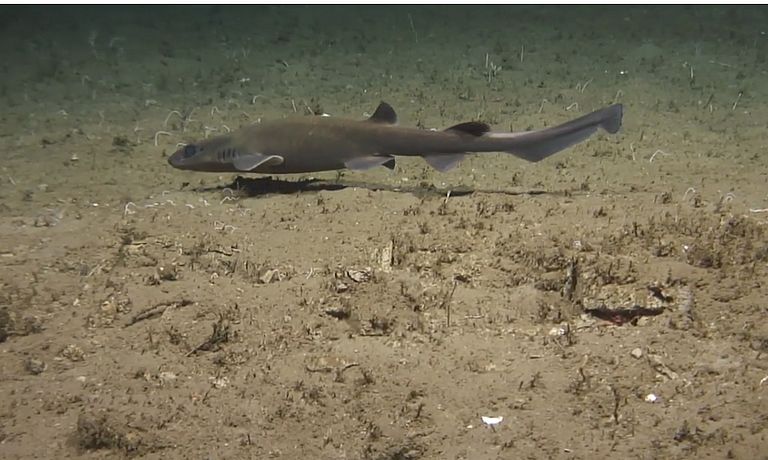Image of the month: April 2020
Adaptation strategies to an extreme environment
The image of the month April shows the ROV KIEL 6000 as it is launched from the research vessel SONNE. This Remotely Operated Vehicle (ROV) is used to explore the underwater world at depths of up to 6000 meters, as the name suggests. Thanks to this maximum diving depth, the ROV KIEL 6000 can reach more than 90 percent of the entire seabed.
Light penetrates the oceans to a depth of about 500 m, after which it is pitch black. The diving robot is equipped with spotlights for orientation in the darkness. Many organisms are also capable of bringing light into the darkness, but this often fulfils more functions than simply illuminating the surroundings. This type of light, known as bioluminescence (gr. Biós = life, lat. Lumes = light), enables, for example, communication between individuals, partner searches and the attraction of prey.
Most creatures are not able to reach such depths at all. The deep diving record among mammals is held by the sperm whale at around 2500 to 3000 meters to hunt squid. While the ROV weighs about 3500 kilograms, bull sperm whales weigh ten times as much.
At a depth of 6000 meters there is a pressure of about 600 bar. An inflated bicycle tire is just four bar. In order to withstand extreme conditions such as in the deep sea, an underwater vehicle must have an extremely pressure-resistant design. Cavities are avoided if possible. If there are any, they are filled with oil, for example, which cannot be compressed even under high pressure. For this reason, many deep-sea fish either do not develop swim bladders at all or are enriched with stored fat.
With a maximum speed of three knots the ROV KIEL 6000 cannot compete with the fastest swimmers in the ocean, but top speed is not decisive in the deep sea. On the contrary: Many of the organisms living there restrict their movements to a minimum in order to save energy due to a lack of prey. But here too, further adaptations in the deep-sea habitat have become established in the course of evolution. The absence of scales in deep-sea fish reduces the resistance in the water. Furthermore, they often have a greatly enlarged mouth. This drastically increases the chances that an organism swimming past is actually eligible as prey.
Energy is not the main problem with the ROV. It remains in constant contact with the research vessel via a cable and is also controlled by it. However, the ROV needs space on the surface for this. After all, there are 6.5 kilometers of cable on board the ship, unwound onto a large, 30-ton winch. Five containers with a total weight of about 65 tons have to be accommodated, containing the ROV, equipment etc.
As a conclusion: Extraordinary technology and biological blueprints are needed to survive in the extreme world of the deep sea, much of which remains unexplored.
More information:






